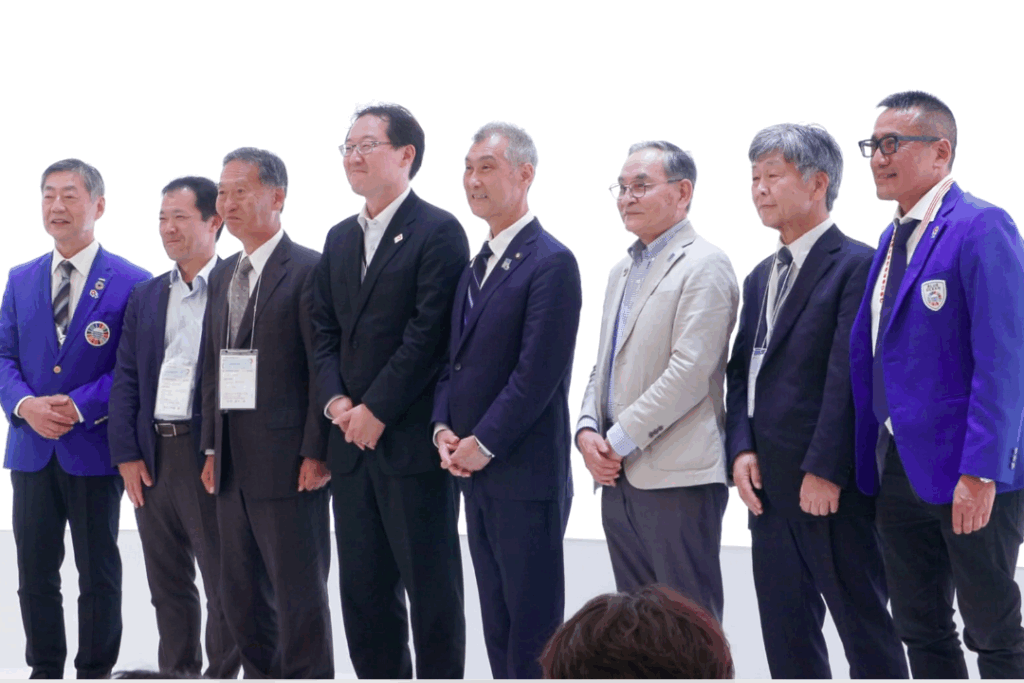
On Saturday, May 17th and Sunday, May 18th, 15 national, local, and private organizations participating in the “Ocean Expo Project,” which aims to revitalize Japan starting from its ports, gathered at the BLUE OCEAN DOME to present various insights and initiatives on sustainable utilization of marine resources, revitalization of ports and local areas, and more. The two days were filled with the potential for Japan’s rebirth.
ZERI Japan Ocean Expo Project Executive Committee Activity Report
On the first day, Saturday, May 17th, opening remarks were given by Yusuke Saraya, Chairman of ZERI JAPAN; Hidetaka Inoue, Member of the House of Representatives representing Minato Ward, Osaka City; and Katsuhisa Mita, Osaka Prefectural Assemblyman. Lectures on urban development starting from Japan’s ports began.
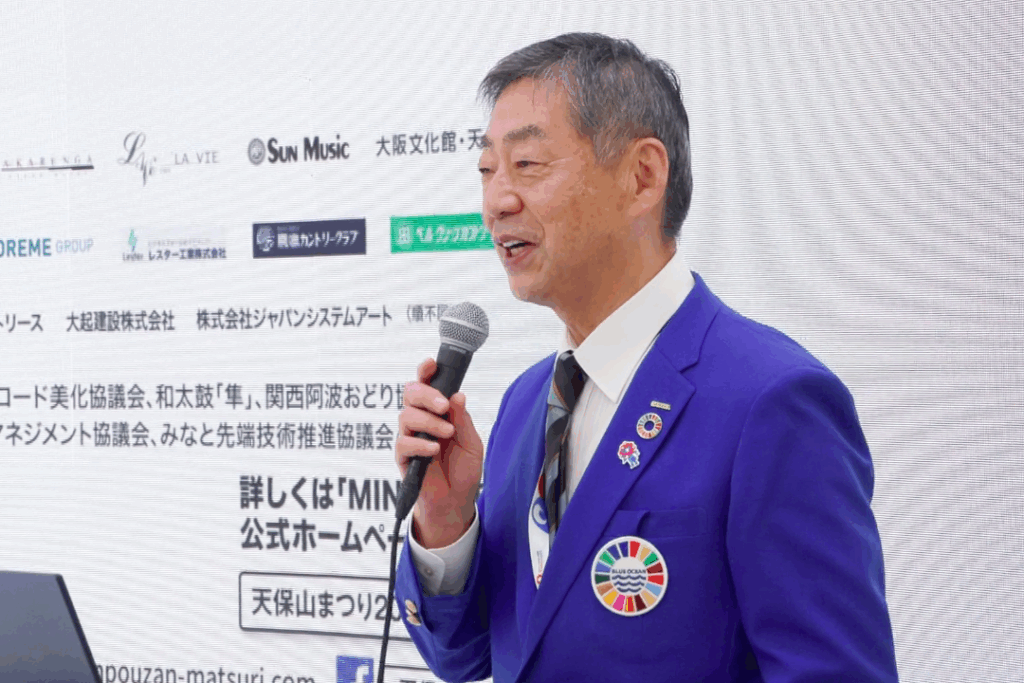
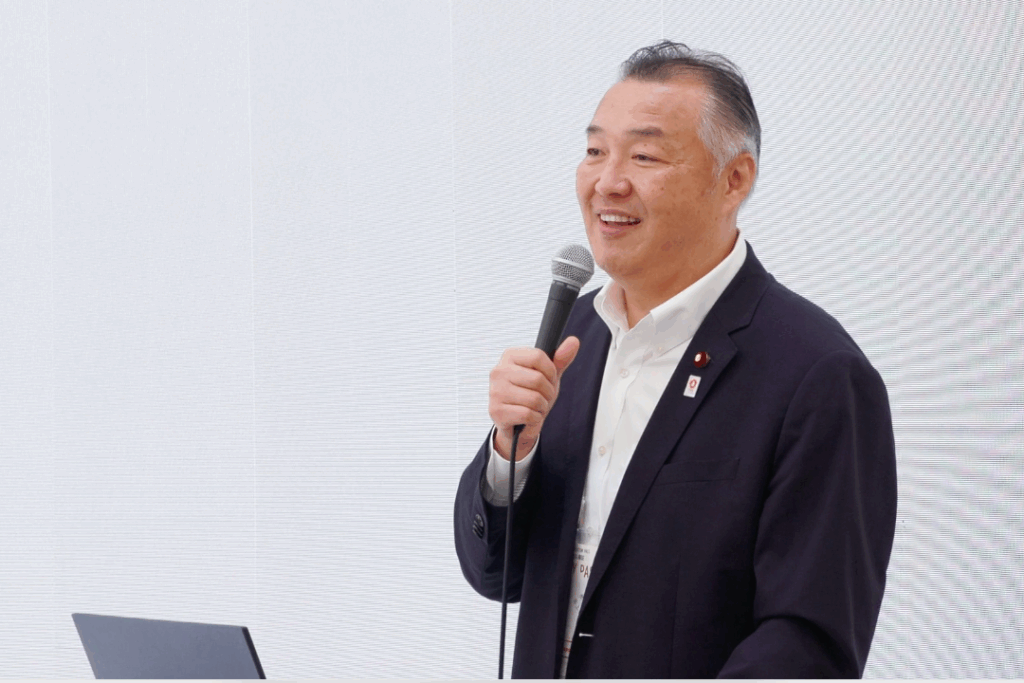
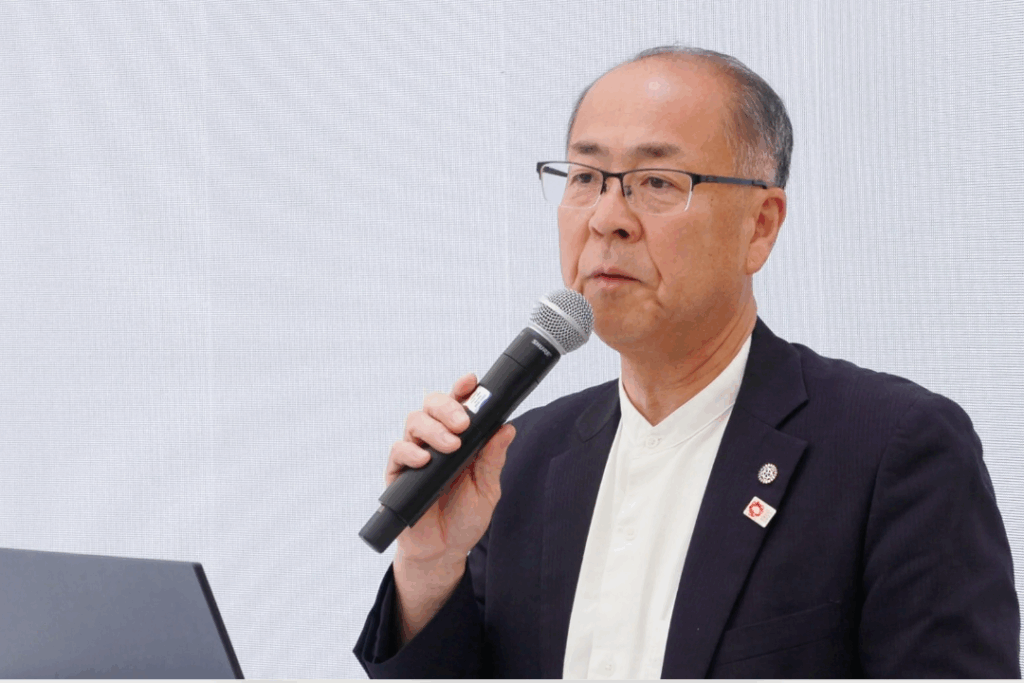
“Ports” Protect Cities, Empower Them, and Connect Them to the World
After opening remarks, Naoki Ito, Director of the Osaka Port and Airport Development Office, Kinki Regional Development Bureau, Ministry of Land, Infrastructure, Transport and Tourism, took the stage. He envisioned ports in 2030 and proposed the importance of policies that utilize ports from the perspectives of tourism, transportation, logistics, and disaster prevention.
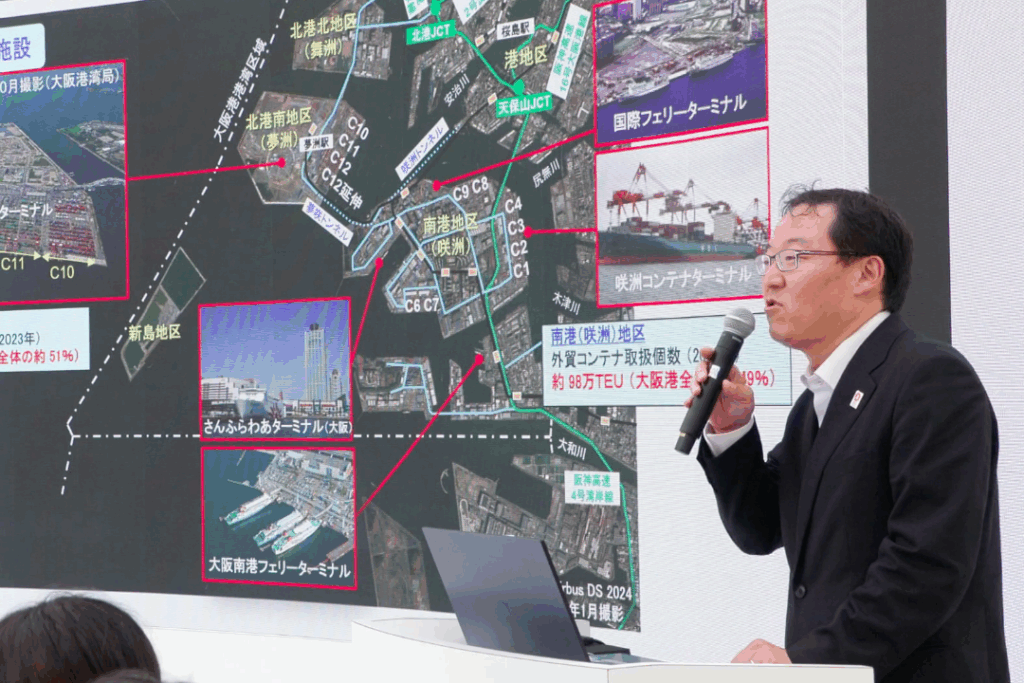
Regional Revitalization through Waterfront Development: Port Oasis and Sea-Class Cuisine
In the second part of the event, Hiroshi Horikawa, Executive Director of the Japan Waterfront Association, explained “port oasis,” information centers scattered around ports across Japan. Kenji Kimura, Director of the Port Oasis Yawatahama Minato Port Community Center, and Nobuyuki Okumura, Chairman of the Beppu International Tourist Port Town Development Council, then introduced examples of “port oasis” that leverage the strengths of their respective regions, raising expectations for the further expansion of “port oasis” and regional revitalization.
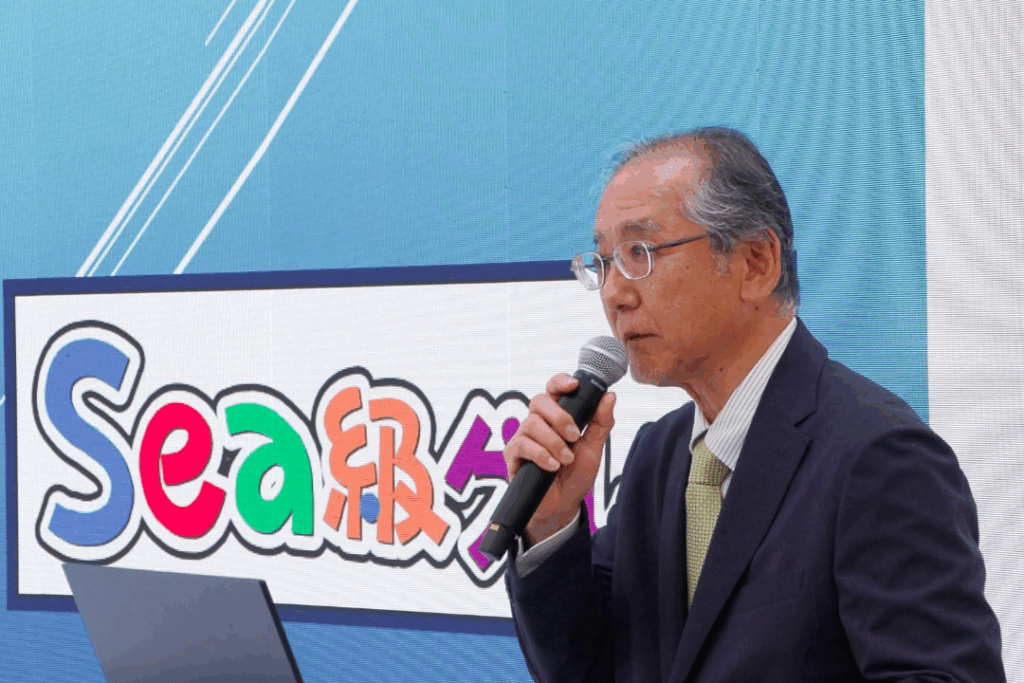
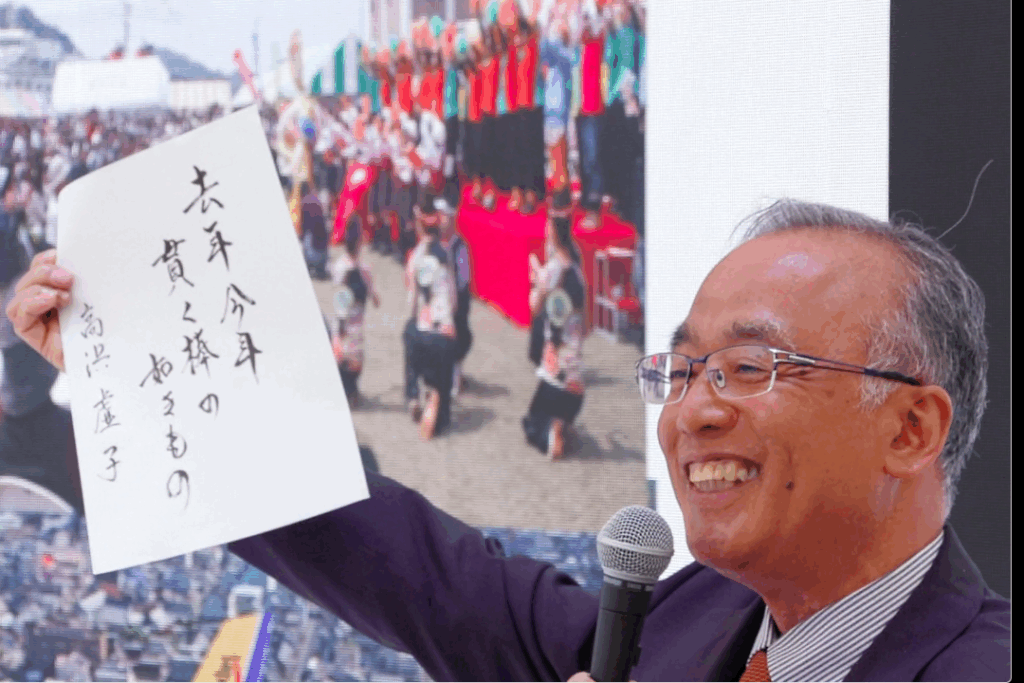
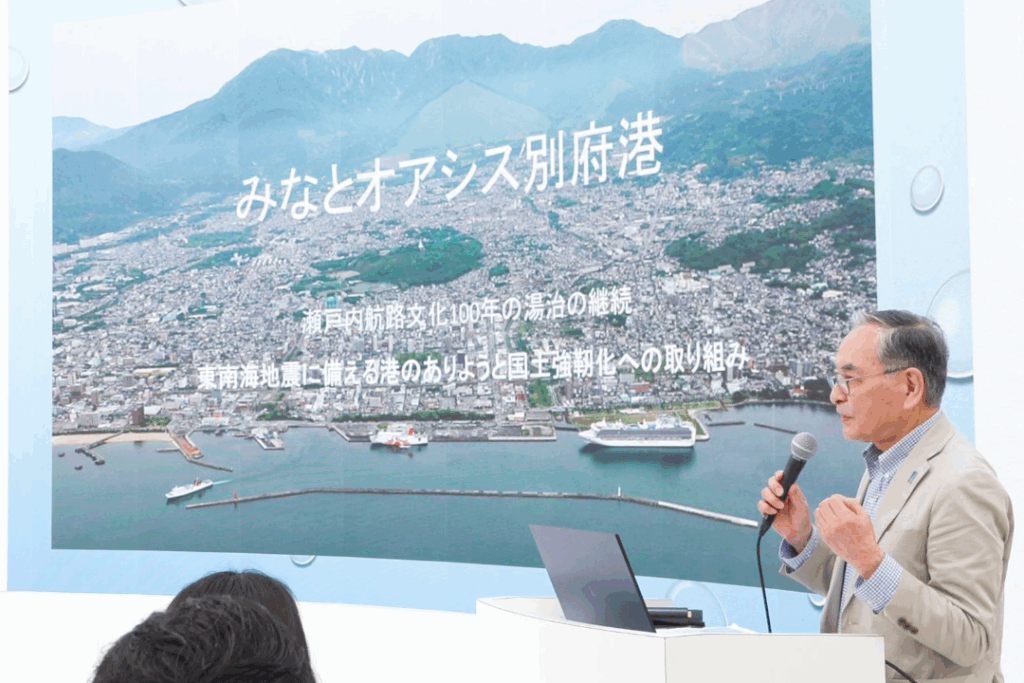
Urban Development in Miyazu City, Kyoto by the Sea
In Part 3, Mayor Masafumi Shirosaki of Miyazu City, Kyoto Prefecture, took the stage to introduce the history and culture that has flourished around Amanohashidate, as well as measures to utilize its charms to create a vibrant and vibrant city. As a sustainable tourist destination, he also focused on environmental and cultural conservation efforts. He outlined future visions, including sustainable urban development toward Amanohashidate’s World Heritage listing and the development of a port town filled with the charms of Kyoto by the Sea.
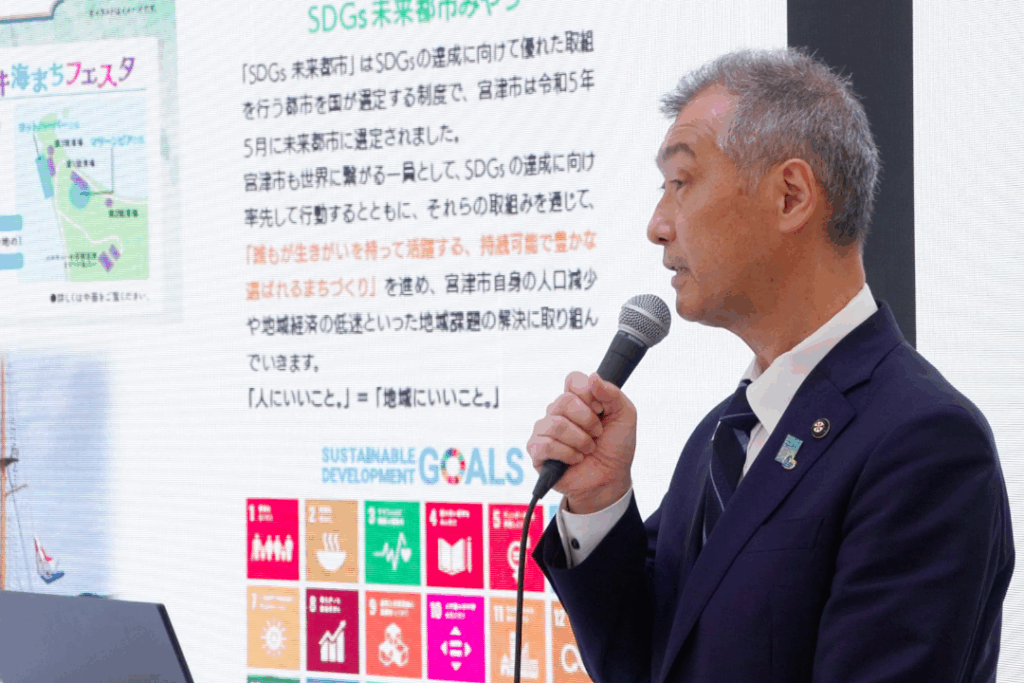
Toward the Revitalization of the Port of Osaka – Cruise Ships and Redevelopment –
In Part 4, Masafumi Arita, Executive Director of the Osaka Port Promotion Association, spoke on the Port’s history, the current state of cruise ships, and the redevelopment of the port area. Regarding the revitalization of Osaka Port, which has a 1,500-year history and has prospered as an international trading port since ancient times, Professor Ito emphasized that we should learn from our ancestors who supported the port. He emphasized future developments, such as making effective use of luxury ships that call at Osaka Port and striving to become a port that can provide high-quality hospitality to foreign tourists. He also called for further redevelopment of the port area, including the Osaka Aquarium Kaiyukan.
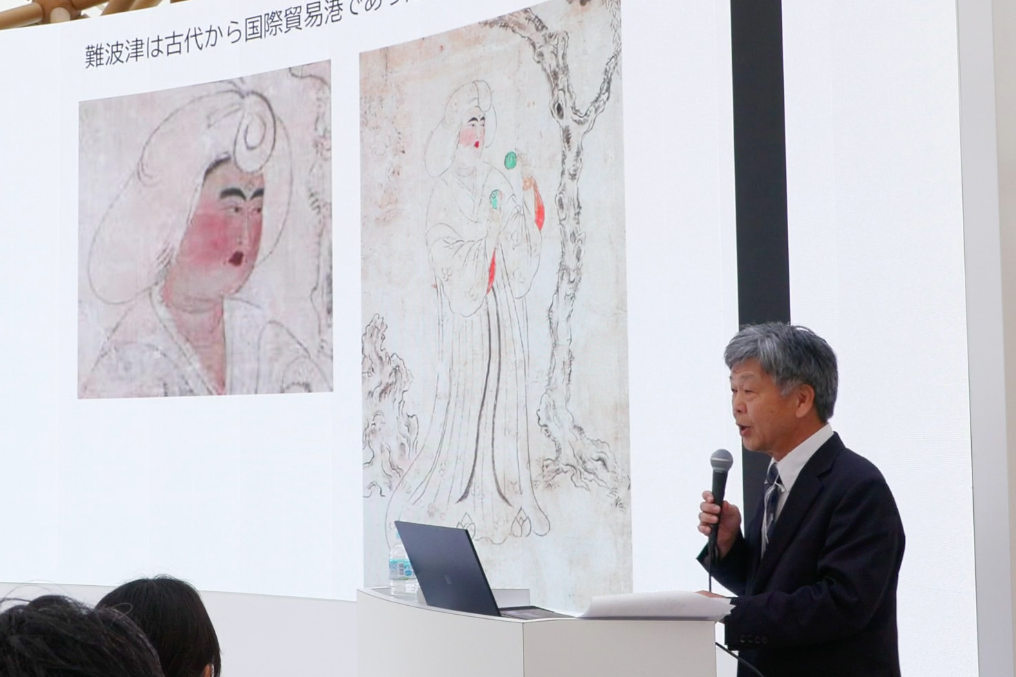
Rivers and Oceans from the Perspective of River Ecology
In the fifth part of the lecture, Professor Yasuhiro Takekado, Ph.D., Visiting Researcher at the International Core Education Organization of Osaka Public University, gave a lecture on the importance of brackish water ecosystems and their relationship to ports. He explained that the intermingling of saltwater and freshwater, known as the “bounded brackish water,” promotes the circulation of materials and biodiversity, and is known as a habitat and breeding ground for larval and juvenile fish such as Japanese sea bass, Japanese goby, and sweetfish. He also explained that soft sediment is necessary to increase the survival rate of breeding, and that the restoration of shallow waters and tidal flats is essential. He also reported on the vigorous efforts being made to ensure that brackish water remains an oasis for living creatures, including hosting events to encourage public enjoyment of the tidal flats and undertaking new tidal flat construction.
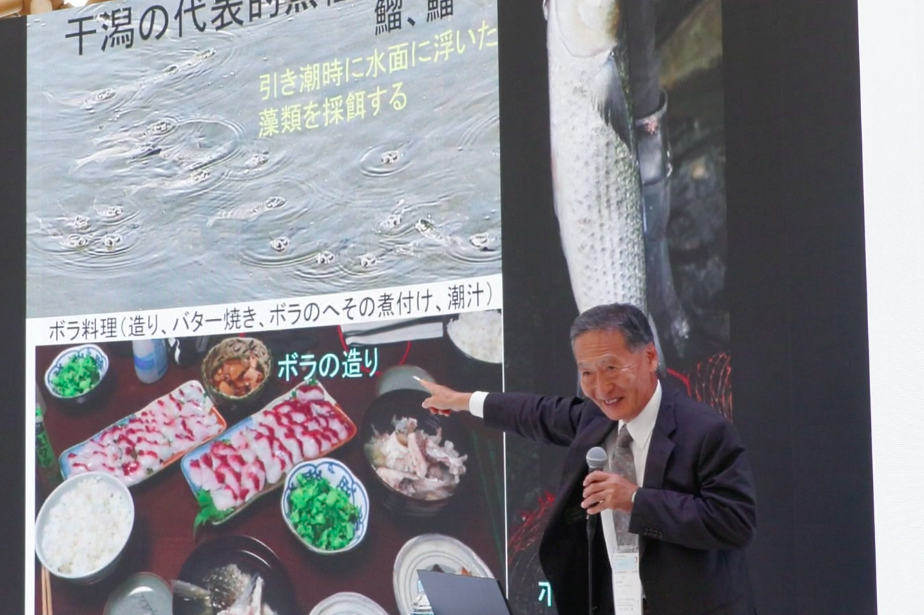
The Importance of the Seto Inland Sea Second Golden Route in the Kitamae-bune Project
The first day concluded with a talk session, beginning with opening remarks by Hideyuki Matsumoto, a Regional Revitalization Evangelist and Port City Development Meister for the Cabinet Office and Osaka Port, followed by a talk session with Yusuke Saraya, Mr. Ito, and Mr. Kinosaki.
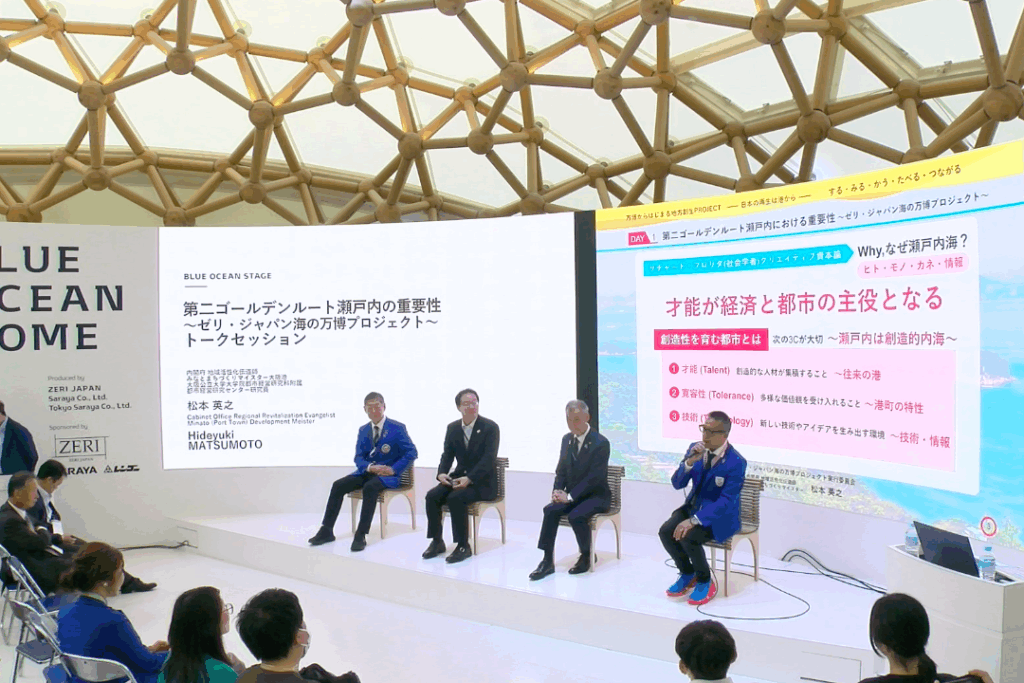
The session agreed that cooperation among ports is essential to developing the Golden Route from Osaka to the Seto Inland Sea. He also expressed hope for the importance of future collaboration between organizations.
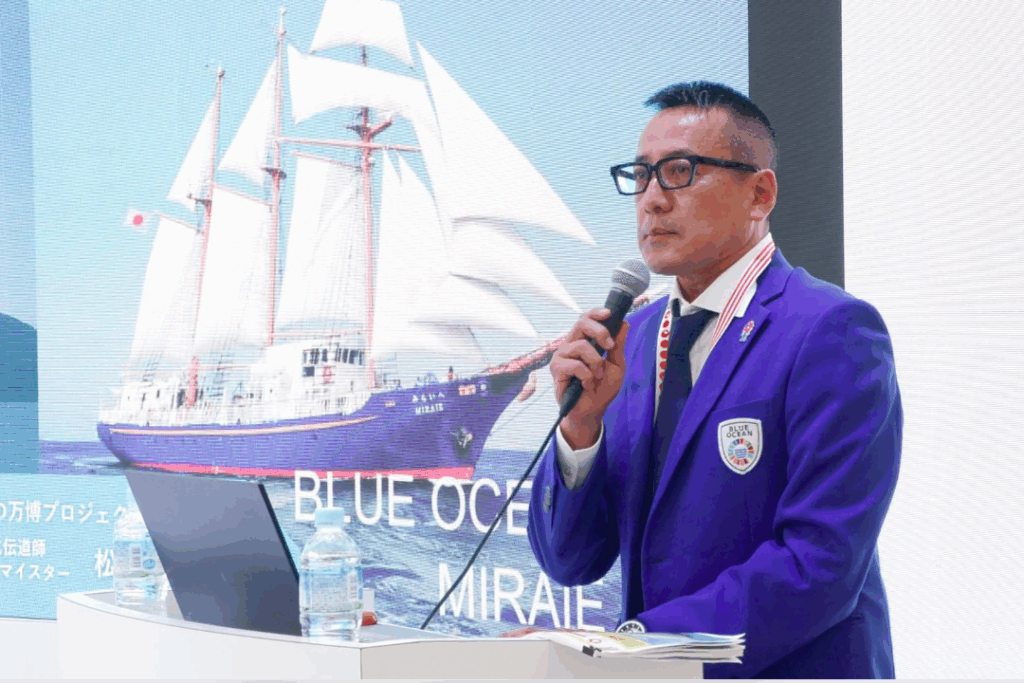
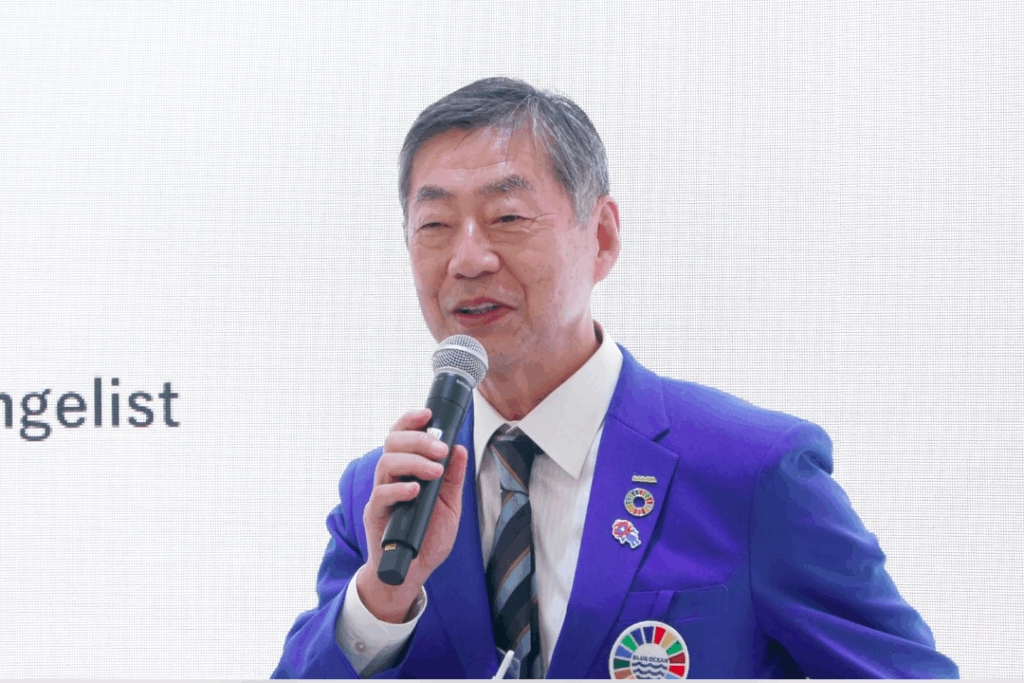
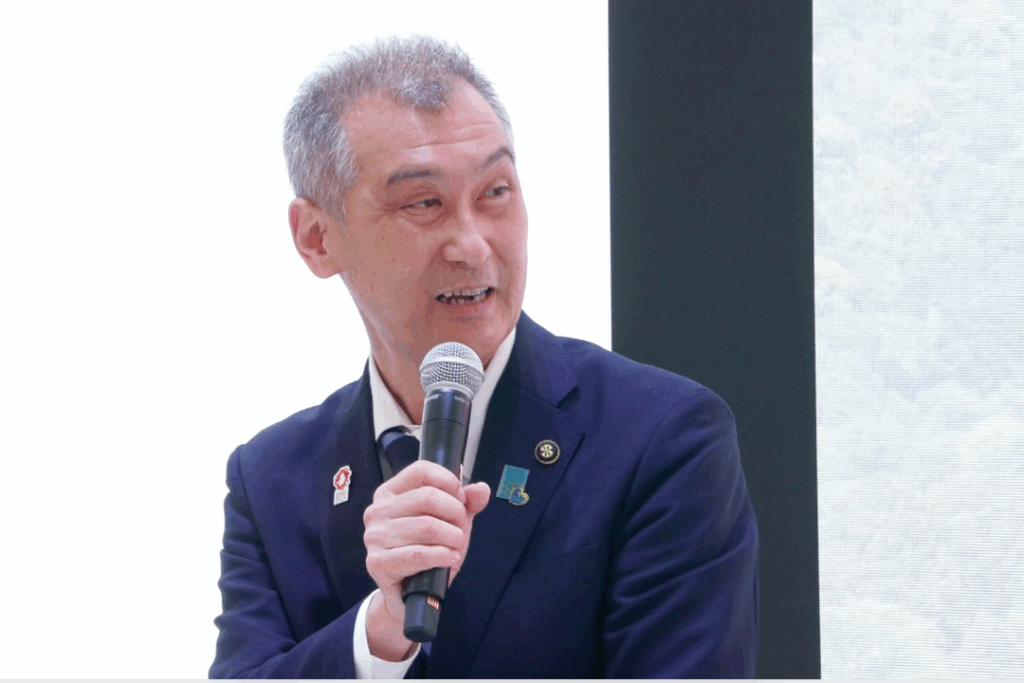
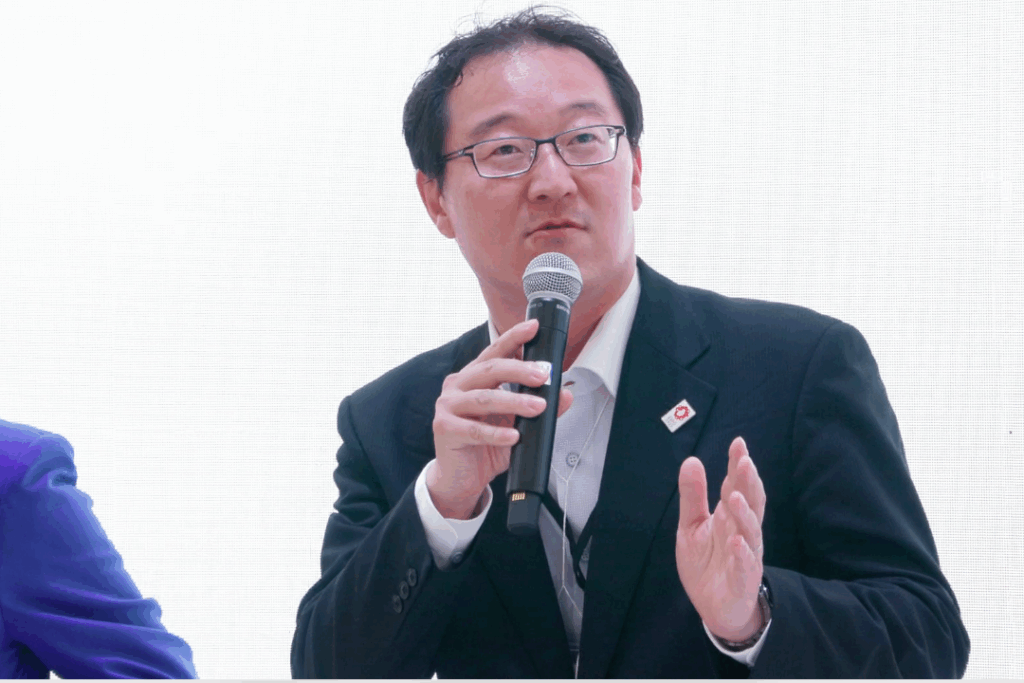
ZERI Japan Ocean Expo Project Executive Committee Activity Report – Day 2
On the second day, Sunday, May 18, the event began with a speech by Yusuke Saraya, followed by opening remarks from Osaka City Council Member and Vice-Chairman Nishi Norihito, and Osaka City Council Member and Osaka Restoration Party member Akira Fujita.
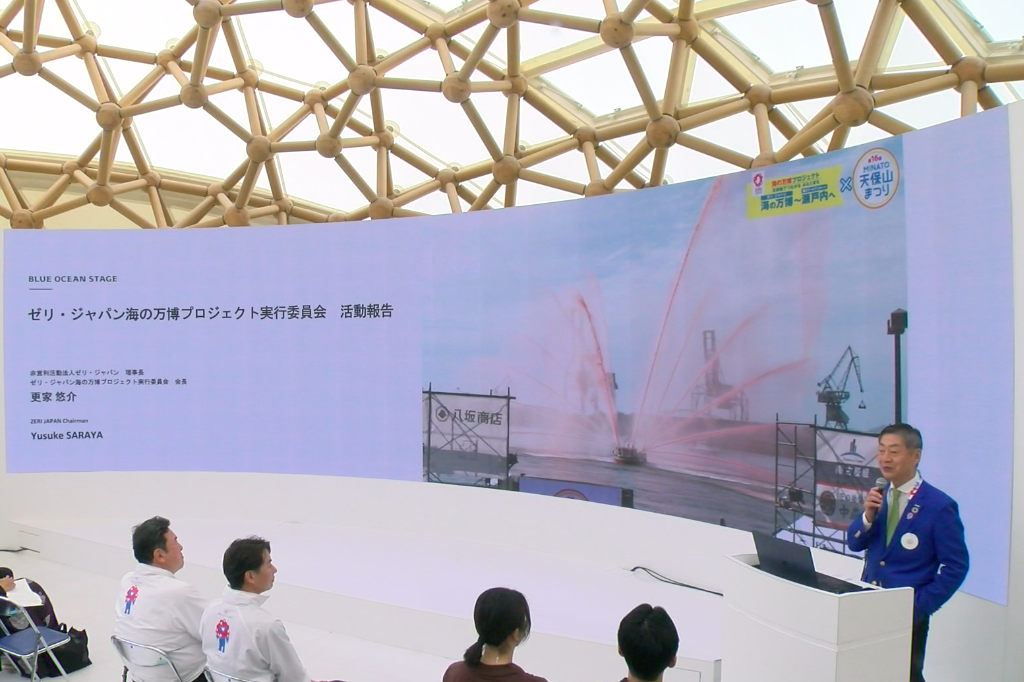
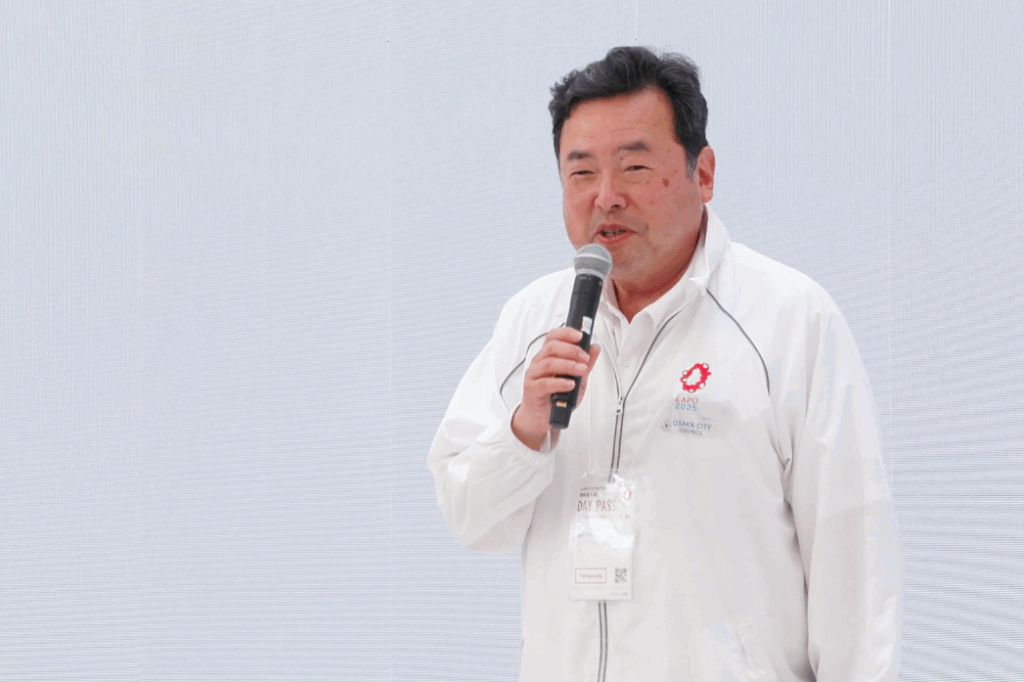
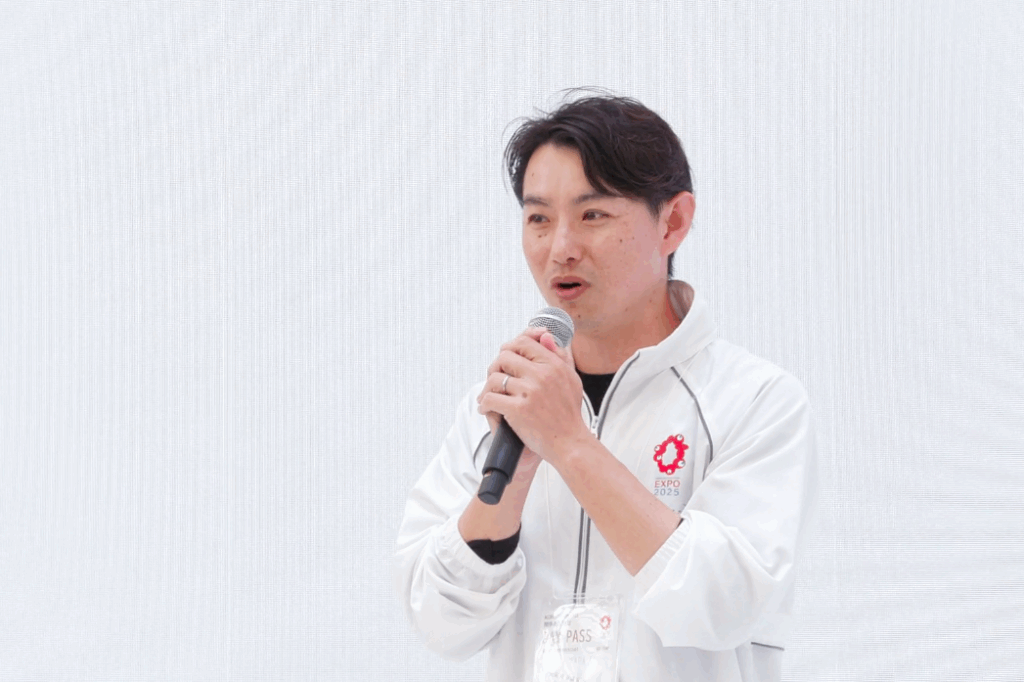
Sumiyoshi Taisha and Navigation: The Japanese Envoy Ships to the Tang Dynasty and Kitamae-bune Ships
First, Shiro Kato, deputy chief priest of Sumiyoshi Taisha, took the stage. He touched on the shrine’s ancient connection with the sea. He spoke of Sumiyoshi Taisha’s historically important role in revitalizing the sea and ports, including the fact that the Imperial Court always visited Sumiyoshi Taisha when dispatching envoy ships to the Tang Dynasty, and that it has been worshiped by shipowners from all industries and regions related to Kitamae-bune ships. He emphasized his continued support for organizations and their activities dedicated to protecting the sea through prayer.
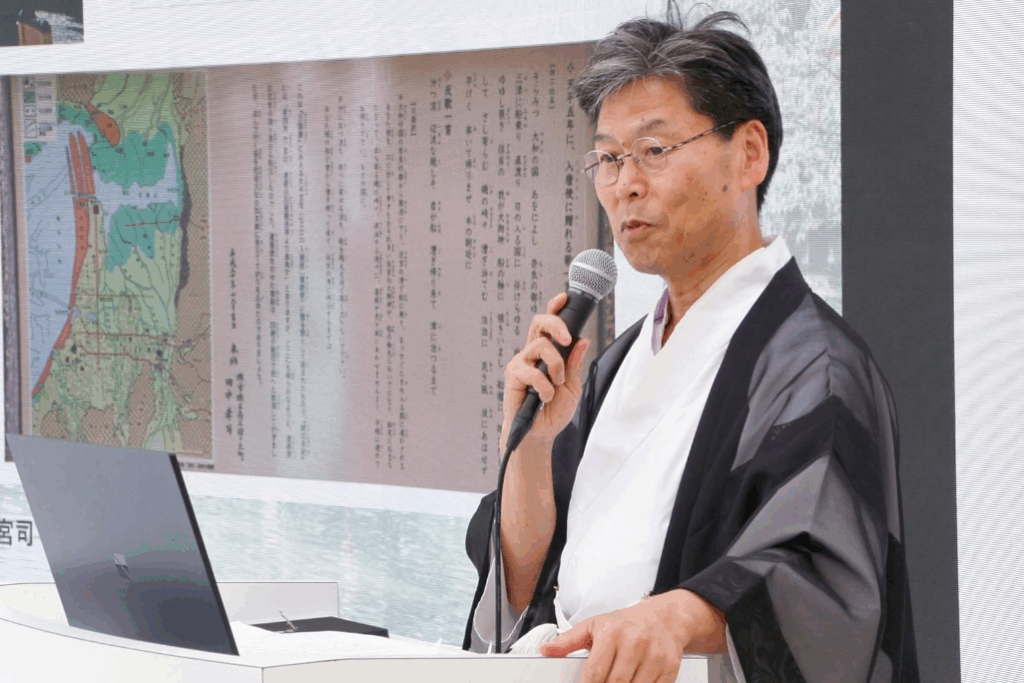
Creating the Sea and Developing People
Keigo Hatanaka of the Osaka City Fisheries Cooperative Association introduced the fish caught in Osaka Bay, as well as information on morning markets and events, and Osaka’s aquaculture and fishing methods. During his lecture, Hatanaka expressed his hope that by raising awareness of Osaka Bay through everyday experiences such as food and experiences, more people will become environmentally conscious and contribute to marine conservation.
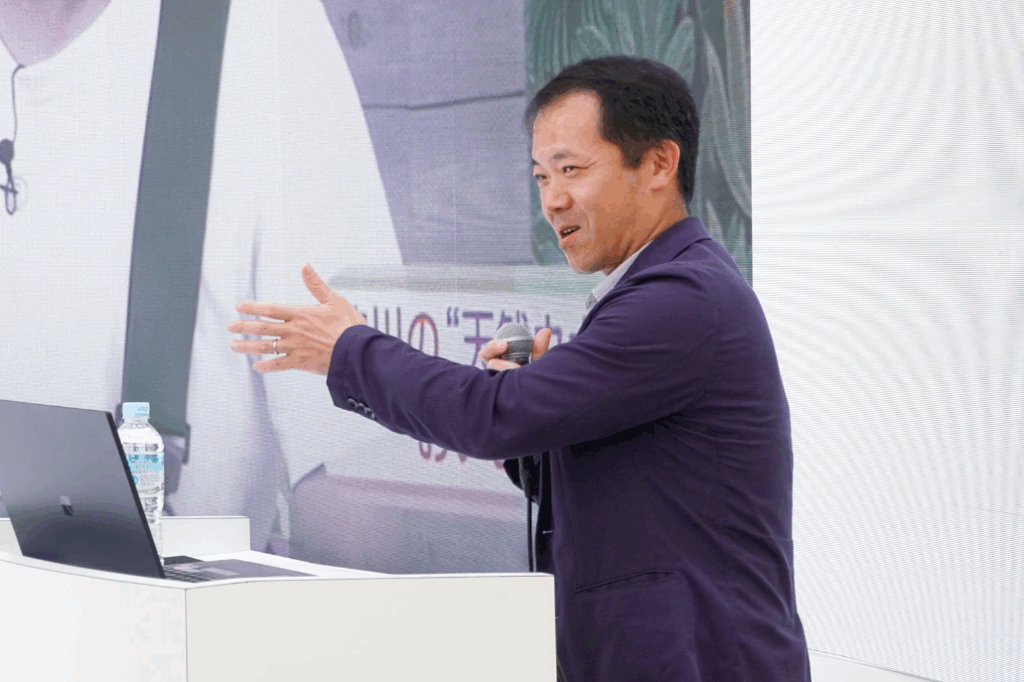
Eiichiro Kitamura, Representative Director of the Osaka City Fisheries Cooperative Association, also emphasized that Osaka Bay, with its large amount of reclaimed land, is reducing the area of tidal flats and shallow waters, increasing the risk of losing habitat for young fish.
Yoshitaka Sasai of the Osaka Cuisine Association introduced the Naniwa region’s fish-eating culture, which has practiced quality control since the Edo period to ensure the safety of raw fish. During his talk, Sasai emphasized the importance of seasonal seafood and suggested that fishing in accordance with the seasons also contributes to resource conservation.
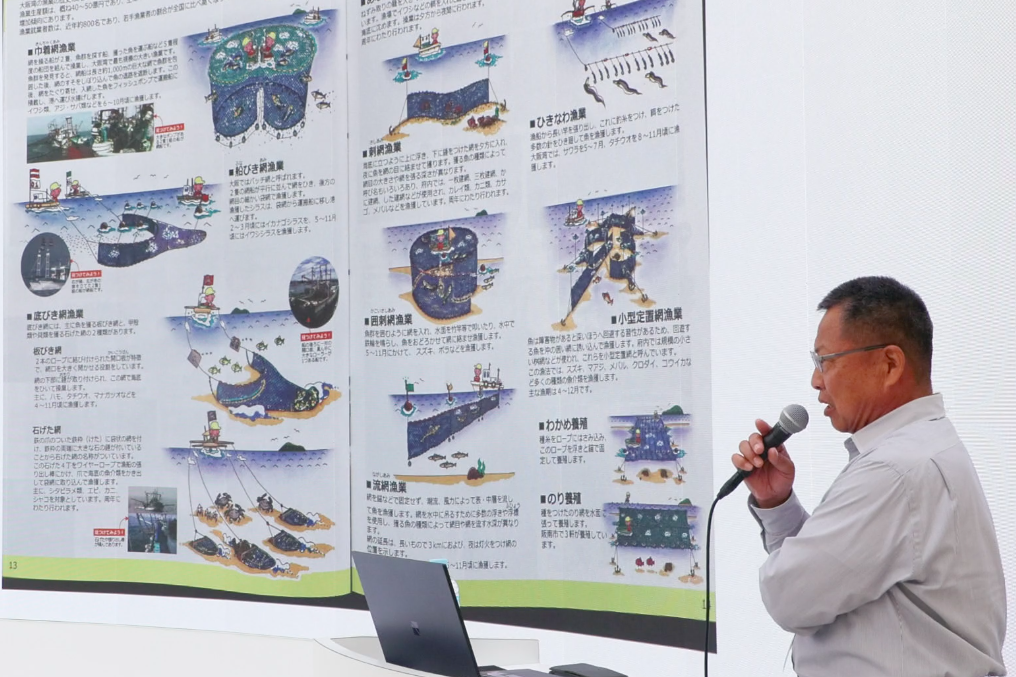
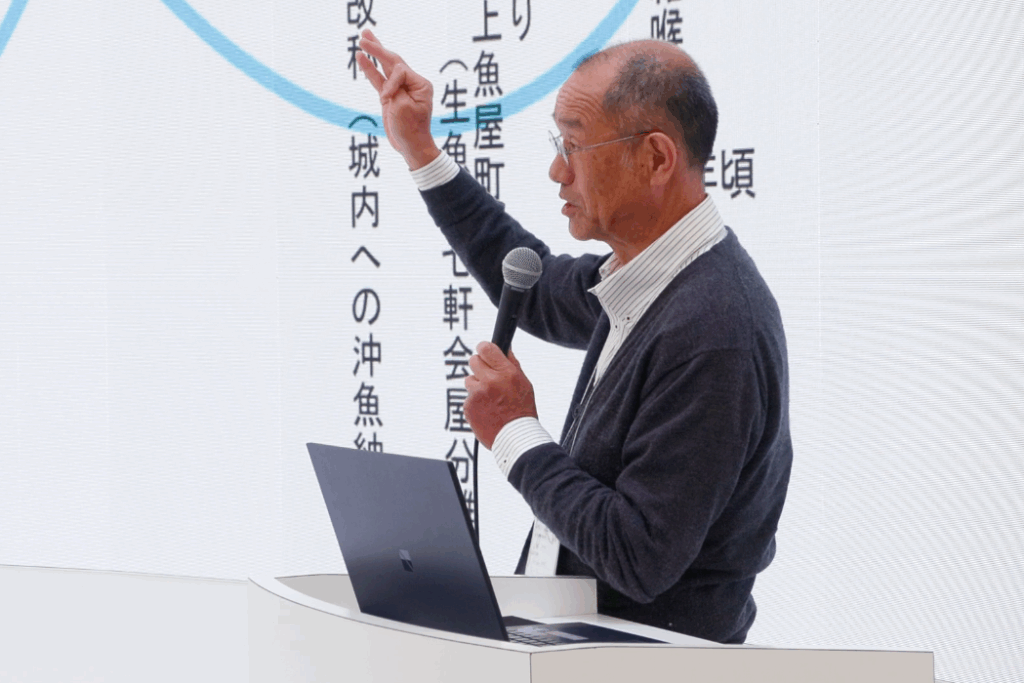
Current Status and Regional Management of Osaka City’s Minato Ward
In the second half of the first session, following opening remarks from Port Area Management Council Chairman Ueda, Mayor Terumi Yamaguchi of Osaka City’s Minato Ward, which is celebrating its 100th anniversary since its establishment as a ward, introduced the ward’s overview and future plans.
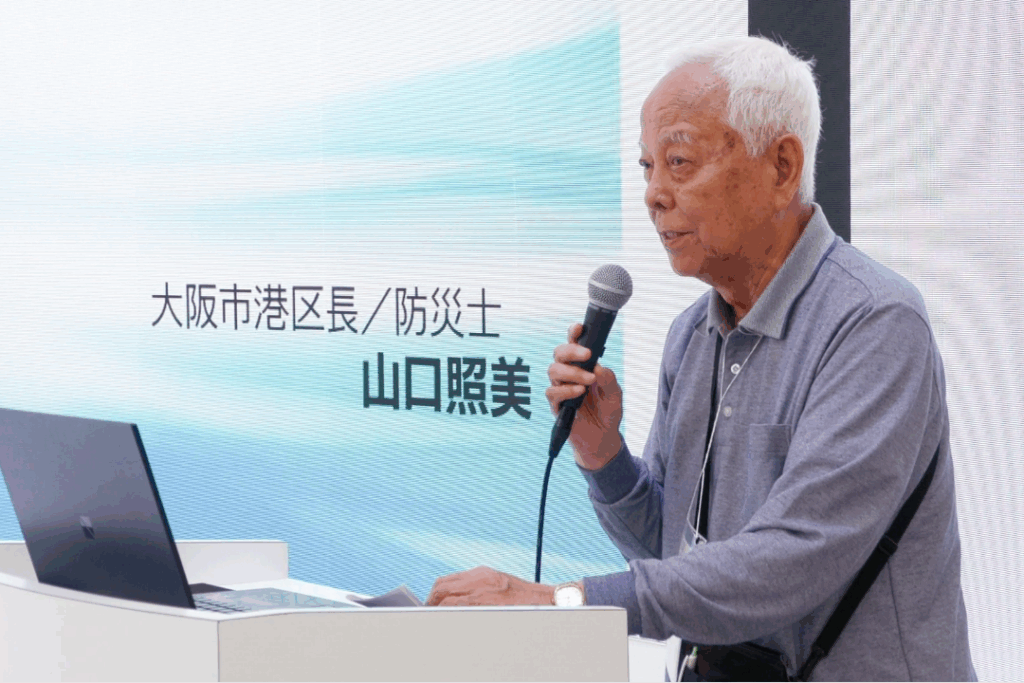
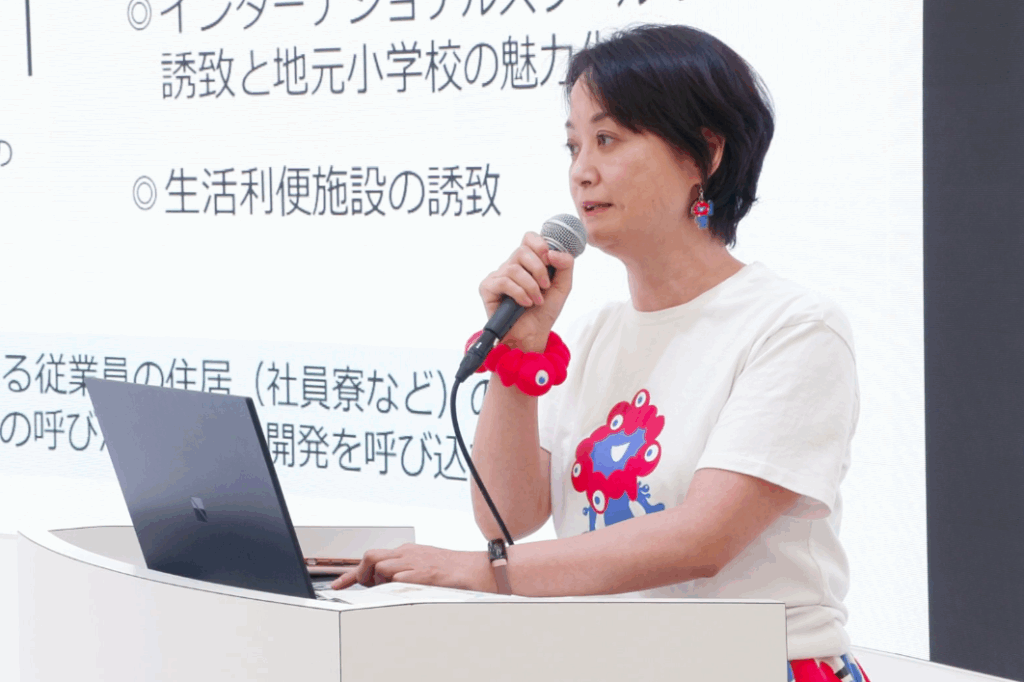
Keita Kondo, council member of the Minato Urban Development Council Osaka, representing the Bentencho area; Yuichi Kakumoto, representing the Asashiobashi area; and Masayo Shinobu, representing the Osaka Port area, each took the stage. Each speaker spoke about efforts to increase population, create excitement, and promote redevelopment, and shared examples of how various regions are promoting port revitalization.
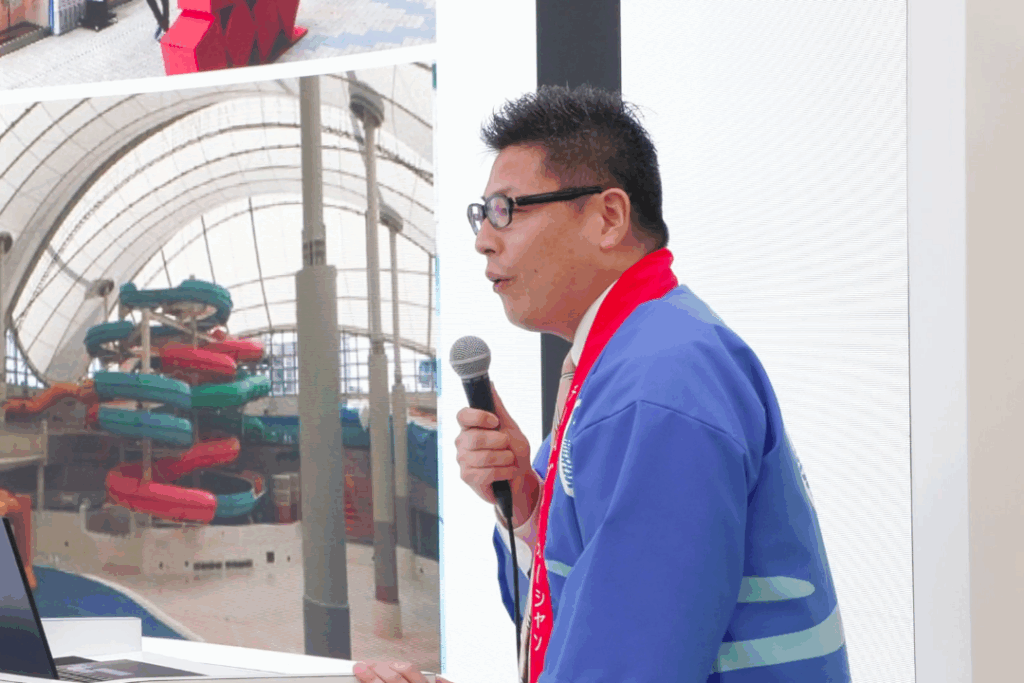
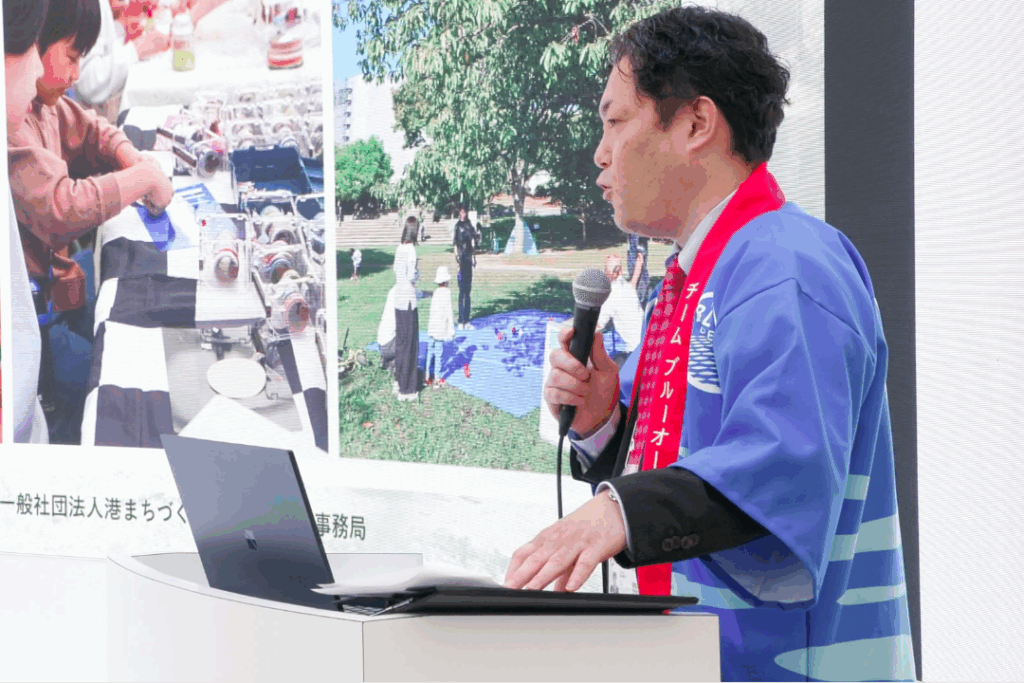
Tamba Sasayama: A Creative City Connected to the Osaka Economic Zone
After a series of lectures on port revitalization, the event promoted the appeal of Tamba Sasayama, which is connected to the Osaka economic zone. Following opening remarks from Takaaki Sakai, Mayor of Tamba Sasayama City, Hyogo Prefecture, Noboru Odagaki, Chairman of the Tamba Sasayama International Expo Executive Committee, appeared wearing a headgear featuring the logo. The Tamba Sasayama International Expo Executive Committee explained its activities, which promote the appeal of beautiful rural areas and serve as a model for regional revitalization, revitalizing rural areas across Japan.
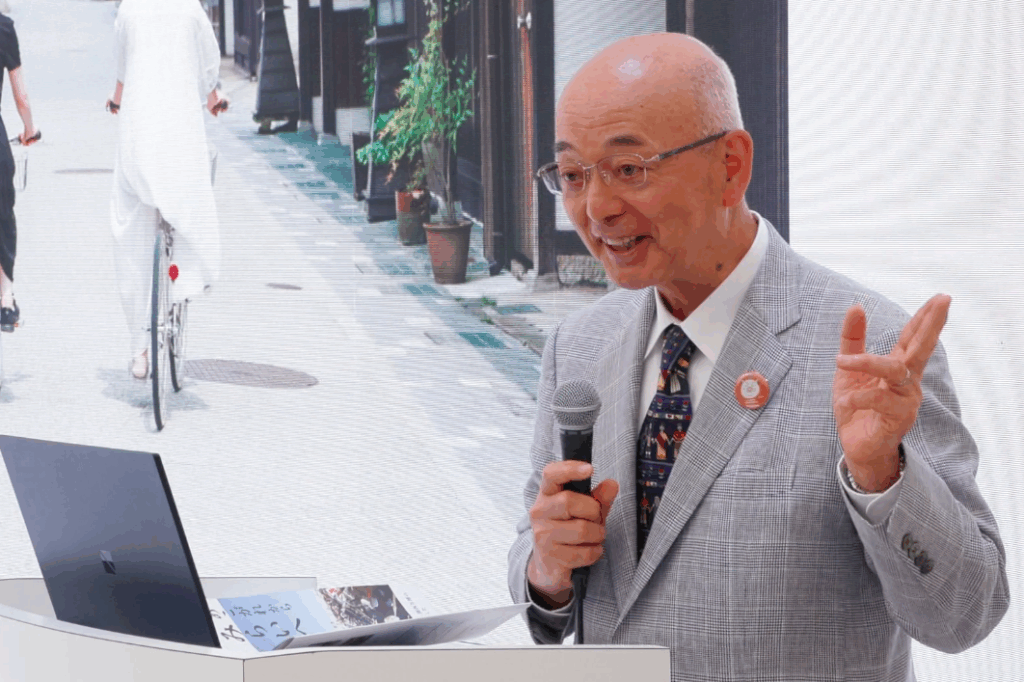
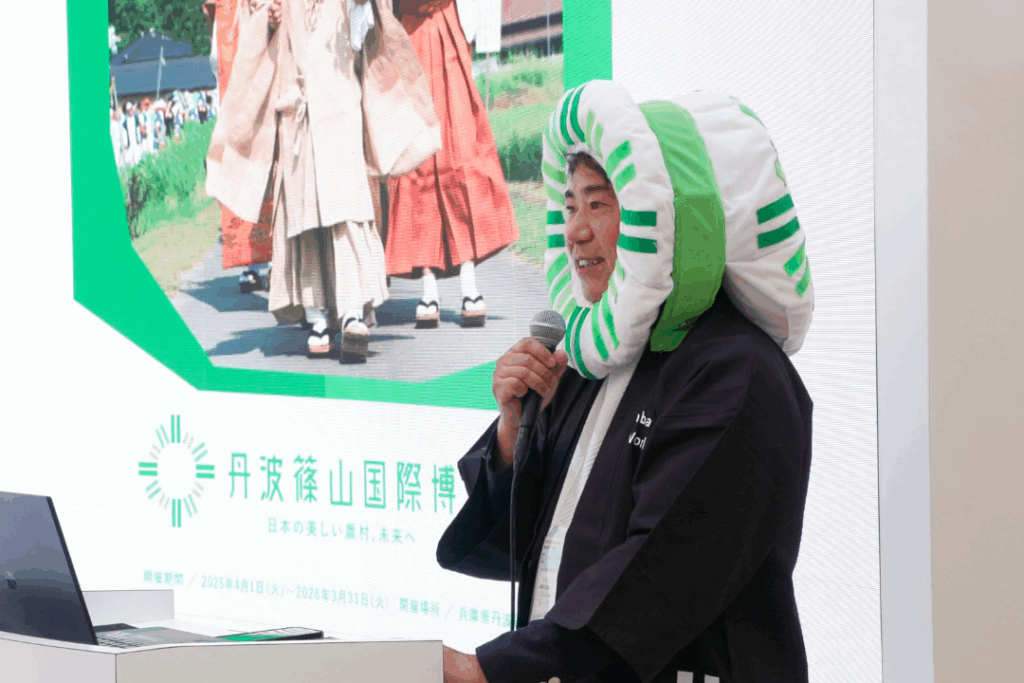
In addition, Masashi Habe, Director of the Tourism and Exchange Department at Tamba Sasayama City Hall in Hyogo Prefecture, provided an overview of Tamba Sasayama City. Yoshikazu Tanaka, Director General of the Osaka Convention & Tourism Bureau, a public interest incorporated association with the city, spoke about the Gourmet Street initiative, which aims to provide gourmet experiences. Katsukazu Tanaka of the Kobe Economic Club spoke about the delicious beef of Tamba Sasayama, which is promoting its activities as a food mecca. Tanaka stated that the power of regional revitalization leveraging the Tamba Sasayama brand will continue to contribute to preserving Japan’s pristine landscape.
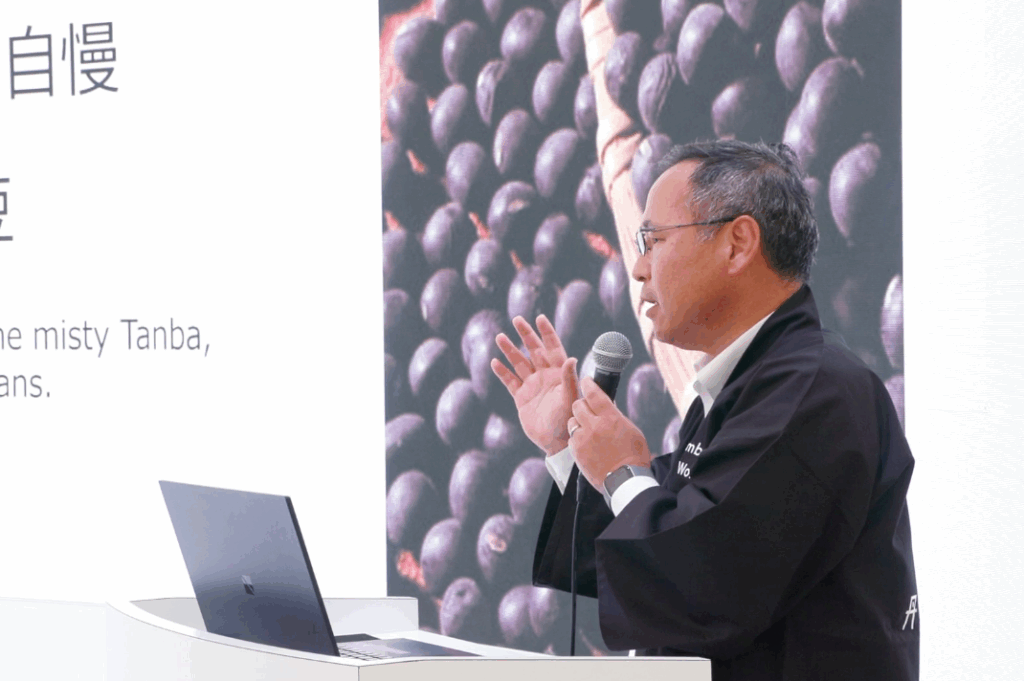
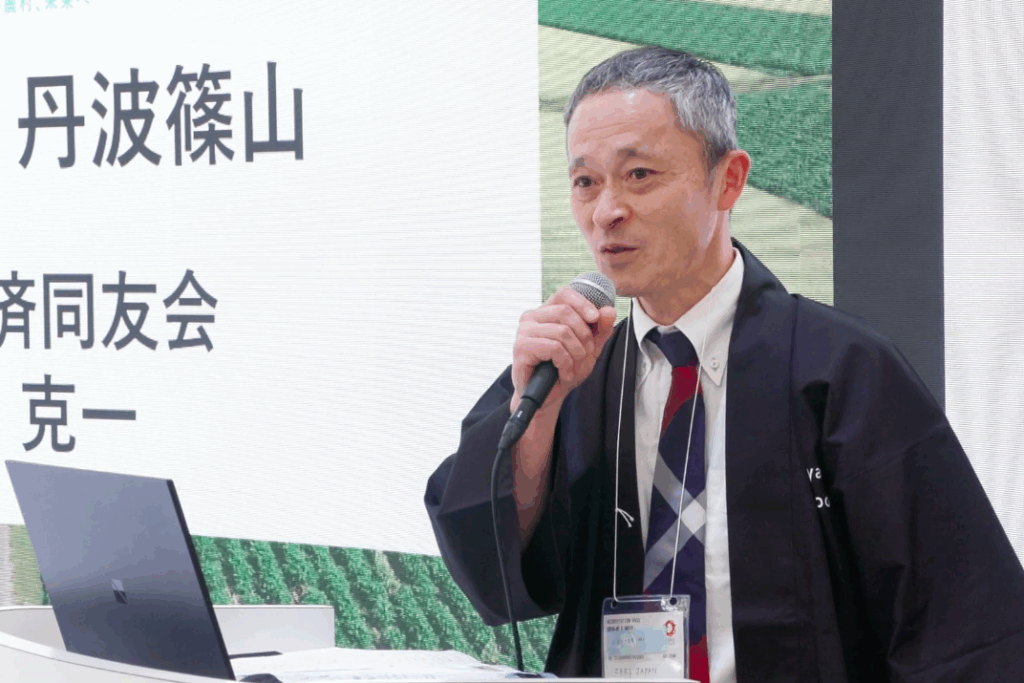
The Importance of Port City Development and Art
Toshiro Ikegami, Professor Emeritus at Kyoto City University of Arts, gave a lecture on developing a rich port city filled with art and nature. He explained the importance of art, citing examples of urban development in which he has been involved, such as transforming the machinery and equipment scattered around town into beautiful artwork and designing towns that incorporate plants and the sea as environmental aesthetics. He stressed the importance of spiritual enrichment leading to a sustainable society, and embracing and preserving the richness of the sea, along with art, to connect the development of port towns to future generations.
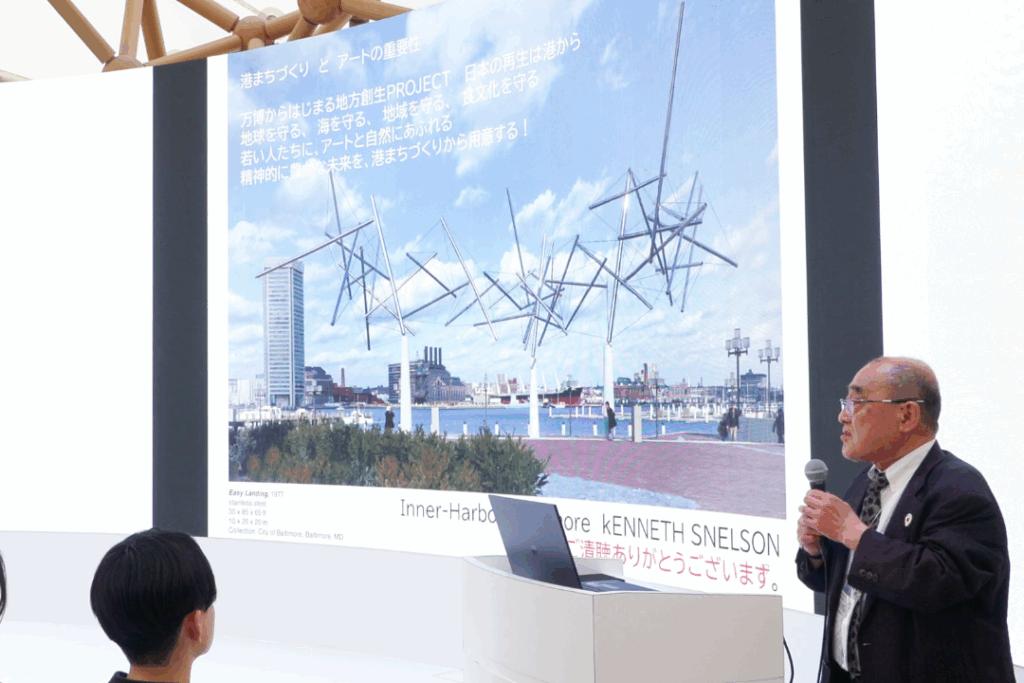
Port-Centered Urban Development in the Tempozan Port of Osaka: A Port Oasis
Hideyuki Matsumoto, Regional Revitalization Evangelist for the Cabinet Office and Port of Osaka Port Master, closed the two-day event. Matsumoto stated that the foundation of urban development lies in considering revitalization through the blessings of the sea and mountains, and the fishermen and hunters who work there. He summarized the urban development visions of the many speakers who spoke over the two days.
Believing that making Osaka prosperous will improve Japan, Matsumoto emphasized that “Osaka must be vibrant,” concluding by calling on everyone to cooperate and concluding Port Urban Development Day.
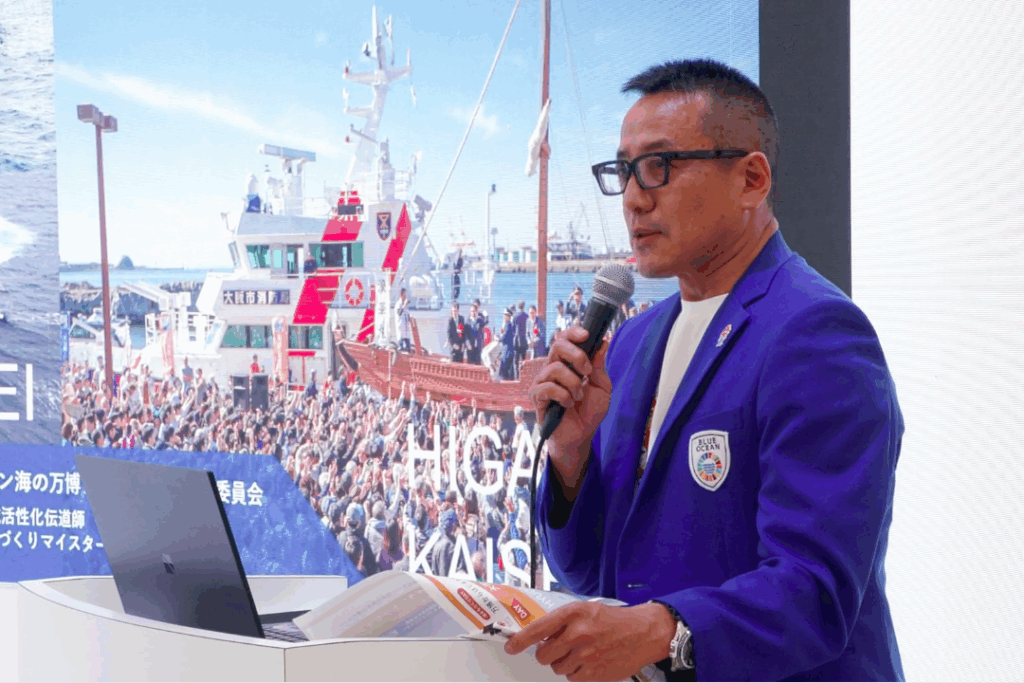
▼The event is currently available on the BLUE OCEAN DOME Official YouTube Channel. Please take a look.
【#034】Regional Revitalization Project Starting with the World Expo – Japan’s Rebirth Starts at Ports – Day 1 (ZERI JAPAN / Port Urban Development Council Osaka)
【#035】Regional Revitalization Project Starting with the World Expo – Japan’s Rebirth Starts at Ports – Day 2 (ZERI JAPAN / Port Urban Development Council Osaka)